Bay Weekly’s Annual Summer Reading Companion
Books for a mild June morning or a hot August afternoon
Summer promises more time: more time to play, more time to visit, more time to read.
In that spirit, make your summer book list longer than you can possibly read. Make your vacation book bag as heavy as you can possibly lift.
Continuing our Fourth of July tradition, the Bay Weekly family — aged 16 to 79 — describe the books that keep them summer company. Many, many books.
This is for fun. You don’t have to read them all.
Maria Bellos 
New to Chesapeake Country and Bay Weekly; freelance writer published in New York newspapers, Washington, D.C. magazines and trade journals.
Reading for me is a brain vacation. My favorite books take me to different worlds. I never read a book more than once: so many places to go, so little time.
I’m a fiction reader and love novels about early American Indian cultures. By far the best are the First North Americans series by Kathleen O’Neal Gear and W. Michael Gear. Start with the fascinating People of the Silence, about the Anasazi Indians circa 1150ad.
He had stopped twice in the past hand of time. … He had been praying for sixteen days, eating only cactus buttons, and begging the ancestor spirits to help him. Now, it seemed, the ghosts would not leave him alone.
A native New Yorker, I love novels about the city at the turn of the 20th century. The best I’ve read is Dreamland, by Kevin Baker. The book chronicles the lives of, among others, a carnival dwarf and a sweatshop worker.
I love to laugh at Florida crime novels. Author Tim Dorsey told me his books are based on his experience as a Tampa Tribune reporter. I started the genre with Carl Hiaasen, also excellent, but Dorsey beats all. Check in to the Hammerhead Ranch Motel to start your summer vacation.
Kat Bennett
Versatile contributor has been keeping Bay Weekly readers up to date on the Volvo Ocean Race with weekly reports.
Short stories suit my summers. Some authors — Poe, J.D.Salinger, Saint-Exupéry and O. Henry — are old friends; their sentences curve around my eyes like the contours of familiar faces. This year marks the beginning of a new love: Jimmy Buffet, whose Tales from Margaritaville is rich, solid, charming and memorable.
The characters are people I want as neighbors. I like the things they say so much I write them down and stick them on the refrigerator.
Lesson Six from “Are you ready for Freddy”:
“If you decide to run with the ball, count on fumbling and getting the s—t kicked out of you a lot, but never forget how much fun it is to be able to run with the ball.”
In “I wish Lunch Could Last Forever,” the heroine makes a toast to “the man who taught me that love could be more fun than work, that music is the voice of the soul and that lunch should last forever.”
Great thoughts for summer that will last forever.
Mick Blackistone
Commercial crabber and award-winning author of books about the Bay for children and adults.
The lazy days of summer aren’t so lazy anymore. The older I get, the more things I find to do, piddling here and piddling there, making a dollar here and a dollar there. Reading generally takes a backseat because, generally speaking, I’d rather be outside or writing on my latest book project. When it’s time for escape, I still read on two levels: The light stuff and the more thought provoking.
For light reading, I can’t break away from John Sanford and his prey novels and anything by James Patterson. Both writers capture my attention and I’m eager to see what happens next. Patterson gets an extra plus because his chapters are two to four pages long, so I comfortably stop whenever I’m ready.
For the more thought provoking time I’m reading An Unreasonable Woman, A True Story of Shrimpers Politicos Polluters and the Fight for Seadrift, Texas. It is a great story of Diane Wilson, a fourth-generation shrimper and activist for the commercial fishing industry. Hey, a tale of outlaw shrimpers and crooked politicians, enviro-activists and informants, grudges and murder, betrayal and redemption — and a courageous woman. Might even be better than Sanford and Patterson!
Think I won’t make time to read? Don’t bet on it!
Janice F. Booth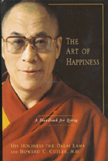
Award-winning contributor; reader and writer for a lifetime; teacher for 36 years.
Saving wild ginseng, restoring the American chestnut, protecting coyotes and moths and raising goats, apples, children: Prodigal Summer is wild and unpredictable. Annapolis-born novelist and science writer Barbara Kingsolver paints six lives into one, lush summer’s canvas.
Kingsolver captures paired stories of love, desire, joy, loss, disease and death with her painterly eye. Through all this, coyotes, birds and bees pursue their destinies.
Kingsolver says, “a novel has to entertain — that’s the contract with the reader: you give me 10 hours and I’ll give you a reason to turn every page.” If you’ve read her novels Bean Trees or Pigs In Heaven or Poisonwood Bible, you know she keeps that promise.
My second recommendation, The Dalai Lama’s The Art of Happiness: a Handbook for Living shares with Barbara Kingsolver’s Prodigal Summer two core beliefs: first, that human beings share a common life bond with all living things; second, that gentleness and compassion are the source of goodness. The book is a guide for living and for achieving happiness. From the state of the world, it would appear most of us could use some help.
Psychiatrist Howard C. Cutler conceived and co-authored the Handbook after his private conversations with Tenzin Gyatso, His Holiness the 14th Dalai Lama of Tibet. Cutler’s case studies and personal anecdotes reduce the Dalai Lama’s assertions to real-life experiences, simple-to-fathom and to follow. Absorbing The Art of Happiness in small doses throughout the summer — and throughout life — makes sense for me.
Mark Burns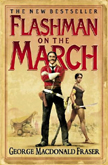
Perennial college student, retail bookserf, long-time Bay Weekly contributor.
Woe to the undisciplined bookworms, we whose libraries suffer the bloat of unread tomes for blame of greedy curiosity. Pi drifted on in mid-book atop a floor stack for months, abandoned for the siren song of John Hodgman’s strange chronicle of hobo insurrection and sundry misinformation. This in turn fell by the wayside on sudden urge to revisit Moby Dick, until Ishmael too was cast adrift on attending to fresher catches.
What can I say? There are too many good books. Occasionally, though, there drifts in a great read that snare curiosity and hold it in thrall enough to finish without interruption. The latest such discovery is George MacDonald Fraser’s 1969 cult hit Flashman, and it promises addiction to the entire series of 12.
Harry Flashman is the bully from Tom Brown’s Schooldays by Thomas Hughes, a Victorian morality novel. These are that amoral villain’s further adventures, a fictional memoir picked up from his expulsion and continued through the turn of the 20th century by series end. He will eventually be blanketed in medals and honors as a hero of her majesty’s empire, but the truth of his tale is deliciously anti-heroic.
Flashman does for Victorian period fiction what Tom Jones did to the Enlightenment, turning convention on its head with the exploits of a ribald cad. Flashy is a toady, coward and cheat led by only concerns of libido and self-preservation. He fixes a duel, betrays his country and steals en route to happy end.
The quirks and follies of Victorian life are exposed to hilarious effect as Harry’s narration strips away the veneer. The read is never dim, livened by sharp intelligence and wit. Fraser has a remarkable gift for the written word and absorbs the reader into the tale with his Victorian language, corrupted to the task of less polite storytelling.
Bill Burton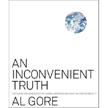
Chesapeake Country’s Old Man of the Bay, 35 years the Evening Sun’s outdoors writer; columnist for Bay Weekly ever since, that’s 13 years now.
If your summer vacation plans have you headed to the beach this summer, might I suggest an appropriate book for you to read between stints of sloshing on sun-tan lotion.
If instead you’re thinking of the mountains, I also have an appropriate book worthy of reading while enjoying the scenery and cool temperatures.
If you’re staying home to avoid increasing fuel and lodging costs, I can suggest a must-read.
All three books are the same: Al Gore’s An Inconvenient Truth. No matter where you’re headed, you can learn what your location will look like at sometime in the future — and possibly sooner than expected.
If you’re at the ocean beach, probably you’ll need scuba gear to return to the same spot some day in the future.
If you’re going to the mountains, you may find things crowded with tearful refugees from flooded lowlands.
If staying at home, you can ponder whether the comfortable house you now live in will be just another underwater artificial fishing reef. If author Al Gore is right, there’s going to be an awful lot more ocean — and much less habitable land. Worldwide.
Never before was I an Al Gore fan; I’m turned off by his politics. But now half-way through An Inconvenient Truth, I admit to pondering whether I shouldn’t have voted for him. Both times.
He’s the only prominent politician to take global warming by the horns.
“I have learned that beyond death and taxes, there is at least one absolutely indisputable fact. Not only does human-caused global warming exist, but it is also growing more and more dangerous and at a pace that has now made it a planetary emergency,” Gore warns.
This is an aptly named book. All bad news is inconvenient; this inconvenient truth has the virtues of being easy to read and exceptionally interesting. Shocking photos and graphs tells the story of global warming better than anything thus far. You’ll no longer keep your head in the sand. It’s a cry for action. Now.
Steve Carr
Adopted shore crewman for Volvo racer Brasil 1; author of Waterviews (with Marion Warren and Eric Smith); environmental consultant; Bay Weekly columnist.
As you lounge on the beach this summer, staring out at the blue ocean capped with milkshake waves, take along a fascinating book called 1421: The Year China Discovered America.
It’s the work of a former British submarine captain named Gavin Menzies who followed the mysterious trails of Grand Eunuch Admiral Zheng He and his fellow Ming Dynasty captains sailed from China in 1421. The Chinese explorers sailed in a giant armada comprised of more than several thousand vessels, some nearly 500 feet long, and with rudders larger than the Nina, the Pinta or the Santa Maria.
The north Pacific is a vast circulatory system, with winds constantly blowing in a clockwise oval direction. As Admiral Zhou Man’s fleet entered the Pacific, the Japanese current would have also carried them northwards before starting a clockwise sweep toward the coast of North America. The California current would have then taken over, sweeping the fleet southwards down the western seaboard of the United States to Panama. From there, the north equatorial current would carry a square-rigged ship back across the Pacific toward the Philippines. The whole round trip, before the wind and current all the way, would have been about 16,000 nautical miles.
During their two years of travel, they used their celestial navigational skills to plot longitude and latitude while mapping the unknown globe for the first time in human history.
Sound farfetched? Examine the evidence of their colonization along the east coast of Africa, Southeast Asia, India, the Middle East, Australia, the Caribbean, Greenland, the Arctic and the Pacific and Atlantic coasts of both North and South America. Menzies uncovers countless signs of their past presence, including carved stone figures, porcelain, silk, Chinese chickens, exotic plants and lookout posts at their landing beaches — one in what is now downtown Newport, Rhode Island. Then there’s Chinese DNA in the native populations.
Europeans — including Henry the Navigator, Columbus and Magellan — would use the Chinese maps to discover the world as we know it today. Grand conspiracy theory? Or true history? You decide for yourself.
Dotty Doherty
Contributing writer; Massachusetts native; Chesapeake paddler and explorer.
I must recommend not just books but authors — ones whose sentences flow with artistry and unexpected imagery. Like eating a raspberry truffle or homemade vanilla ice cream, savor these authors’ words for their texture, flavor and subtleties.
Haven Kimmel is simply a delight. Twice I have laughed through her first memoir, A Girl Named Zippy and will easily read it again.
Her follow-up memoir about her mother, She Got Up Off the Couch, is equally funny and poignant. My favorite Kimmel novel, Something Rising (Light and Swift), takes a mesmerizing and raw look at a pool-shark daughter and her father.
In Marilynne Robinson’s novel Gilead, we journey with an old dying pastor as he writes about his life in a letter to his young son, uncovering long-held secrets. Curl up in a hammock and sway to rich, haunting breezes in her much earlier novel Housekeeping, which follows two young girls sent to live with an eccentric aunt:
Clearly our aunt was not a stable person. … We thought we heard her leave the house [in the middle of the night], and once we found her sitting on the back porch steps, and once we found her standing in the orchard. Sleep compounded our difficulties. … As surely as we tried to stay awake to know for certain whether she sang, or wept, or left the house, we fell asleep and dreamed that she did.
Seth Kanter’s remarkable Ordinary Wolves will take you for an unforgettable ride through the Alaskan tundra with a boy’s struggle to manhood as modern culture crashes into the Inupiaq hunter life he embraces.
Finally, Walter Macken’s powerful 1950 novel Rain on the Wind has captured my heart several times over the last 30 years, tossing me on lyrical waves along the Irish coast.
Dennis Doyle
Bay Weekly’s sporting life columnist; omnivorous reader; husband of highly regarded Annapolis sculptor, D.H. Banker; father of three sons.
If the names of authors LeCarre, Ambler and Greene are fondly familiar to you and the name Alan Furst is not, you are in for a treat this summer. His latest novel, The Foreign Correspondent, is espionage at its best.
Be warned though, if you are a true lover of summer climes, this may not be your cup of tea. By the second chapter you will no longer remember the warmth of the June sun on your face, nor the comfort of a sultry breeze. Any bright, ambient light will have faded until the wintry gloom of a rainy Parisian street confounds your inner vision. A dank, musty smell of intrigue will have already overwhelmed your consciousness.
Suddenly and vaguely uneasily, you’ll be dangerously curious as well. It is pre-war France, 1938, there has been an assassination, and if you clearly understand the situation you don’t nearly understand the situation. But Alan Furst does, and he takes you there in a style and manner that has wrested the spy novel from the domain of the Brits, and placed it firmly into Yankee hands. We are much the better for it.
Three years since he’d been in Berlin — was it different? The people on the street seemed prosperous, well fed, well dressed, but there was something in the air, not exactly fear that reached him. It was though they all had a secret, the same secret, but it was somehow unwise to let others know you had it.
Note: If you devour The Foreign Correspondent too quickly, do not despair. Furst has previous espionage works in publication, the best of which are: Night Soldiers, 1988; Dark Star, 1991; The Polish Officer, 1995; The World at Night, 1996; Red Gold, 1999; Kingdom of Shadows, 2000; Blood of Victory, 2003; and Dark Voyage, 2004.
Nancy Hoffmann
Lives on a 16-acre horse farm with her husband, nine horses, three dogs, five cats and too many goldfish.
Working full time, running a horse farm and going to night school doesn’t leave much reading-for-pleasure time. But I love to escape into stories, so I turn to short fiction. In Ship Fever, I travel with Andrea Barrett’s characters as they explore the natural world of birds, plants and fish. For an excellent book of linked stories set during the Vietnam War, try The Things They Carried by Tim O’Brien.
But I can’t quite give up novels. By staying up too late, I recently devoured March by Geraldine Brooks. You’ll remember the March family from Louisa May Alcott’s Little Women. In Brooks’ Pulitzer Prize winning book, she imagines Mr. March’s time away from his family while serving as a chaplain in the Union Army. It’ll help if you’ve read Little Women, or you could cheat and rent the movie. It’s summer, after all.
For fun, I’ll read The Dogs of Bedlam Farm by Jon Katz, who takes a humorous look at his move, with his three border collies, from suburbia to a sheep farm. Years ago I read Katz’s A Dog Year about the neurotic, obedience competition drop-out border collie he adopted. I have a border collie and border collie mix working on my farm and enjoy Katz’s honest portrayal of the insanity these energetic, workaholic dogs bring to his life.
J. Alex Knoll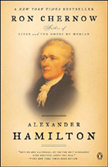
Co-founder and general manager of Bay Weekly lives in the footsteps of history in downtown Annapolis where his wife and colleague, Lisa Edler Knoll, tells him to get off the couch, put the book down and do something useful.
For me, reading is the ultimate luxury. By some standards I read a lot, and by some standards I read pretty fast. Nearly half my life was in school, and books then, as now, were the key to learning. No where was that more true than graduate school, where to keep up on my bookwork and leave time to learn other journalistic skills, I tore through no less than 1,000 pages a week.
But this is exactly what I’m getting at.
Reading is work!
I remember, though, how it used to be, luscious like a guilty secret.
I’m sure my love for books started with my grandmother, Elsa, for whom my daughter is named. A child of an immigrant during the height of the Depression, she started work and left school early, after eighth grade. For her, idle hands — worse yet, idle time — were the devil’s playthings.
“John Alexander Knoll!” she would chide upon catching me sprawled on the living room couch immersed in some other world between printed pages. “Put that book down right now, and get up and do something useful.”
Lo and behold, I’ve grown up to be a journalist, though not that my grandmother lived long enough to witness how useful all that reading would be.
So now when I read for pleasure, I savor every word. At least that’s what I tell my friend, John Sciandra, whose copy of Alexander Hamilton I’ve been working through now for more than a few months.
At more than 700 pages, not including notes and bibliography, this biography spans Hamilton’s upbringing in the Carribean, his rise within the American Revolution, his deep bond with George Washington, his time as the nation’s first treasury secretary and his Shakespearean fall from grace — culminating in his fatal duel with Aaron Burr.
Like many biographers, author Ron Chernow verges on deifying his subject. He argues, however, that Hamilton has been villified — and after reading his book it seems so. The politics of the time were brutal, much more so than today, and personal, with nothing off limits. Hamilton was as fierce a political fighter as anyone of his time. But as in war, where to the victor go the spoils, in politics to the victor goes history — much of which was reshaped upon Hamilton’s death by his enemies, of whom there were many, including Jefferson, Madison, Monroe and, most of all, John Adams.
Much earlier, Hamilton’s genius caught the eye of General Washington, who never ceased to rely on Hamilton’s intellect, insights and abilities. As Washington’s treasury secretary, Hamilton was confronted by staggering debt from the Revolution and no central banking system.
Hamilton’s masterpiece, America’s banking system, survives and thrives today in the most prosperous country in the world.
Not too bad from a self-made man, who through knowledge — and books, grandmother — made his way to the peaks of power.
Bill Lambrecht
Author (Dinner at the New Gene Cafe; Big Muddy Blues); Washington Bureau Chief for the St. Louis Post-Dispatch; Bay Weekly cofounder and editorial analyst.
Back when I was supposed to be reading serious stuff, in the late 1960s and early ’70s, I was having way too much fun. When you’re a player in a red-hot time in history — a transformational time both for young Americans and the nation they lived in — who has time to read books? At least more books than you have to read to get by.
Maybe because I’m guilt-ridden from going to parochial schools, I’m trying to catch up with the works of the great French writers I skipped. They are the ones who basically created the novel, and they’ve got a lot to teach about life. No, I haven’t yet gotten Proust’s Remembrance of Things Past and I still don’t own the Charterhouse of Parma or anything by Stendhal (Henri Beyle).
But at the moment I’m just about finished with Gustave Flaubert’s Salammbo, a romance of sorts by another French writer set in the ancient city of Carthage during the Punic Wars. The phrase Barbarians at the Gate in Flaubert’s historical novel refers to a tall, fierce, fair-haired people who did not care much for the heavy-handed requirements of civilization. That’s why they are massing at the gates of Carthage.
Flaubert’s book about the arriving hordes is an enduring chronicle that serves as a nightmare in the minds of the establishment. (It’s also what a lot of Republicans fear about the coming elections.)
Now, for something more modern, which, I fear, displays my unbroken connection to the ’60s: Robert Greenfield’s newly published biography of Timothy Leary, the LSD prophet, pop psychologist and all-around scalawag. I am especially interested in this book because I recently read an unpublished Leary biography by Jim Lester, a fine writer in Annapolis who produced a manuscript that will see print one day.
But judging from the New Yorker and other reviews of the book by Greenfield (who hung with Leary back then), it’s just what I’ll be needing this summer to remind me of the day when the barbarians of my generation gathered at the gate — and some of us broke through.
Valerie Lester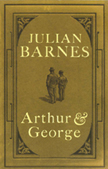
Contributing writer; author of Phiz, The Man Who Drew Dickens and Fasten Your Seat Belts! History and Heroism in the Pan Am Cabin; at work on a modern novel with classical undertones.
Actually, I like reading really meaty stuff in the summer. In the winter, when I work hard, I need the escape provided by a good mystery or an engrossing short novel. But on a summer vacation, freed up, I enjoy concentrating on something that needs some serious focus, like:
Arthur and George by Julian Barnes. I was already hooked by the fifth sentence, in which a child reaches up to a door handle “with nothing that could be called a purpose, merely the instinctive tourism of infancy.”
Does writing get much better than this?
The Arthur of the title is Sir Arthur Conan Doyle of Sherlock Holmes fame. George is George Edalji, a Birmingham (England) lawyer of Indian descent. The novel is built, brick by steady brick, towards the intersection of their lives over events known as the Great Wyrley Outrage. Even if you (like me) don’t like your non-fiction messed up with fiction, Barnes’ scrupulous research, convincing character development and extraordinary narrative powers will captivate you and may even send you off for another examination of Barnes’ Flaubert’s Parrot.
I’ve just re-read The Secret History by Donna Tartt, and it, like Possession by A.S. Byatt, is even more gripping the second time around. It concerns a group of classics students and their mysterious tutor, and the consummate ease with which they perpetrate evil. The narrator insists that murderers often “assert a kind of spurious decency” like the serial killer “who with incarnadine axe, recently dispatched half a dozen registered nurses in Texas” but insisted that he was “basically a very good person.”
It gets your pulse racing, and you can’t put the bloody thing down.
Sonia Linebaugh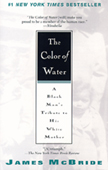
Long-time writer and former assistant editor for Bay Weekly; author of At the Feet of Mother Meera: The Lessons of Silence.
A land-locked woman told me, “I always thought that water was blue, but when you write about the Chesapeake Bay it can be green, gray, brown, purple, pink. I never knew.”
The Chesapeake is all these colors and none of them. Water is by nature without color but reflective of the life in and around it.
On the summer reading talk at Barnes & Noble, I spotted the perfect summer title, The Color of Water by James McBride. By habit, I flipped the book open to an inside page before reading the cover hyperbole or the writer’s introduction. What’s the writing like? That’s what I want to know.
I asked her whether God was black or white.
A deep sigh. “Oh boy … God’s not black. He’s not white. He’s a spirit.”
“What color is God’s spirit?”
“God is the color of water. Water doesn’t have a color.”
This is it, I thought. The perfect summer book. I went back to the cover. A Black Man’s Tribute to His White Mother. 10th Anniversary Edition. Over Two Years on the New York Times Bestseller List.
So other people thought this was a perfectly readable book too. That’s okay. I picture myself on the veranda looking out over the brown, green, pink, purple. Water has no color and all colors. I think I’m going to like this book.
Matt Makowski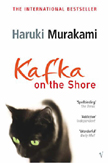
Contributing freelance writer and photographer who hangs his hat in Eastport
James Patterson novels and Janet Evanovich’s Stephanie Plum paperbacks are about as ubiquitous as oversized umbrellas at the beach. It makes sense; umbrellas act as a sun block from the harsh rays of the sun, and Patterson and Evanovich provide a mental block from the realities of your life.
If you’ve conquered Patterson’s potboilers and ended Evanovich’s versions, perhaps it’s time to move on. On the chance you haven’t been keeping up with every writer that springs up on the New York Times Best-Seller List, or just forget to pick some up after the $10-cheaper paperback comes out, a reminder: Haruki Murakami’s Kafka on the Shore.
The book revolves around two seemingly unrelated characters, a 15-year-old boy who adopts the name Kafka Tamura while escaping an Oedipal prophecy from his father, and a dim old man who talks to cats and can make the skies rain fish. If it sounds a little too far out, press on. A few pages into a Murakami book, you quickly accept that anything can happen.
The pages swell with dreamily metered prose that if you read at just the right speed can sync with the ebb and flow of the ocean:
Time weighs down on you like an old ambiguous dream. You keep on moving, trying to slip through it. But even if you go to the ends of the earth, you won’t be able to escape it. Still, you have to go there — to the edge of the world. There’s something you can’t do unless you go there.
Murakami’s ambitious novel is ripe with page-turning what’s-gonna-happen-next chapter breaks. The downfall is you may forget to go swimming.
Sandra Olivetti Martin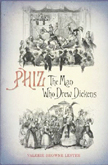
Bay Weekly cofounder and editor; life-long book reader; time-and-a-half journalist; spare-time book editor.
As a newspaper woman, I live life on a wordly schedule. So when I picked up contributing writer Valerie Lester’s book Phiz: the Man Who Drew Dickens, part of my fascination was learning how the legendary partners worked to the demands of the routine deadlines of serial publication — and without Microsoft Word or Adobe Illustrator.
Dickens was often unable to finish writing the text before a new design was due. He sometimes had to tell Phiz what he had in mind, making up things on the spot. Phiz sketched away as Dickens delivered himself of text, and the design would get the go-ahead there and then.
You’ll learn more about Val and Phiz in next week’s installment of Bay Weekly.
In this week’s installment I chronicle serendipity, the welcome force that delivered to my hand Alexander McCall Smith’s 44 Scotland Street.
I’d already devoured eight or 10 McCall Smith books, traveling with him from Botswana, in his affable No. 1 Ladies’ Detective Agency series, to Germany in his irresistibly risible series Portuguese Irregular Verbs, including The Finer Points of Sausage Dogs, to Scotland in his quizzical Isabel Dalhousie series.
But in the class of serials, Scotland Street is just my cup of tea: It’s written in 110 daily installments for The Scotsman, the national newspaper of Scotland, founded in 1817.
What a pity it was newspapers no longer ran serialized novels, McCall Smith writes. This tradition, of course, had been very important in the 19th century, with the works of Dickens being perhaps the best known examples. But there were others, of course, including Flaubert’s Madame Bovary, which nearly landed its author in jail.
I hadn’t really thought out the challenge of writing a novel in daily installments. The structure of a daily serial has to be different from that of a normal novel. One has to have at least one development in each installment, and end with a sense that something more may happen. One also has to understand that one’s readership is a newspaper readership … assailed from all directions …
I listen to it blissfully on talking books, following the domestic lives of a coterie of Edinburgh friends and would-be lovers in twice-daily installments to and from my daily installment of weekly journalism.
Ellen Moyer
Mayor of Annapolis
Jane Jacobs’ The Death and Life of Great American Cities is always on my reading list — though it may not exactly fall into the category of a light summer read.
A selection for my book club, Jacob’s 45-year-old vision of mixed-use communities filled with a diversity of people, architecture and commerce is as timely today as it was when it was written in 1961. Perhaps even more so.
Every day, cities everywhere turn to this classic book for thoughts on how to get people working, shopping and playing where they live. The idea is to get them out of their cars and back onto the sidewalks and into the parks and shops of their neighborhoods.
The Death and Life of Great American Cities is filled with useful and thoughtful information. But it is not some heavy scholastic tome. Too often people lapse into jargon and policy-speak when writing about cities. Jacobs uses bright, everyday language to express her enthusiasm for ideas like strong communities, varied streetscapes and visiting the corner grocer.
So, if you are feeling a little stuffed from a steady diet of fast-food summer books, dig into The Death and Life of Great American Cities.
It’s less filling. And better for you.
Editor’s note: Mayor Moyer’s book club started last September, reading The Death and Life of Great American Cities and actively reflecting on the city every two weeks for 20 sessions. This September, with the original group moving onto It Can’t Happen Here by Sinclair Lewis, while a new group (now accepting members) takes on The Death and Life of Great American Cities. The talks are facilitated by the Touchtones Discussion Project.
Helena Mann-Melnitchenko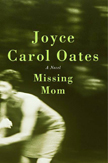
Contributing writer; eclectic reader of American, English, French, Russian and Ukrainian books; likes to sink her teeth into serious books, even in summer.
Tiny and energetic, Joyce Carol Oates reminded me of a hummingbird when I met her at the National Book Festival in Washington a few years ago. Over the years, I have read most of her novels. I am convinced that she is one of the most talented American writers.
So when Missing Mom came out last year, I was first in line at the bookstore.
Last time you see someone and you don’t know it will be the last time. And all that you know now, if only you’d known then. But you didn’t know, and now it’s too late. And you tell yourself, “How could I have known, I could not have known.”
A most personal novel, “a story of missing my mother,” it has at its heart the complicated relationship between mothers and daughters. Nikki, a journalist for a small town newspaper, is the rebellious daughter. A bohemian, she makes her own rules and is prone to fall for unsuitable men. Clare is her conservative and trifle boring sister. A metamorphosis takes place over the year of the two daughters’ mourning.
There is nothing humorous in Laura Restrepo’s Isle of Passion. The Columbian author uses “passion” in its original meaning of “agony or suffering.” I admire the Latin sensitivity for tragedy, evident here, as it is in her countryman’s Nobel prize- winner (1982) Gabriel Garcia Marquez.
Suddenly, when he was about to give up, he rebelled against so much humiliation. A wave of courage made his blood boil, and he regained control over his own body. He stood up, defiantly facing the wind, and in anger took off his belt and begun whipping the air as if possessed. He brandished his belt right and left like a maniac, while shouting at the hurricane at the top of his lungs.
Restrepo’s well-researched historical fiction pulls the reader into the fight for survival by a group of Mexican soldiers and their families on a tiny, barren atoll in the Pacific Ocean. It’s about courage and duty and how far a woman will go to save her children and a man to regain his honor.
Eugene Melnitchenko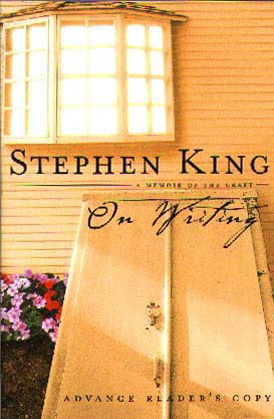
Retired financial analyst and soccer player, having the time of his life watching The World Cup.
Unlike many books on the subject, Stephen King’s On Writing is a clear, informative and entertaining book. King has written some 35 novels, all of them worldwide best sellers, many of which have been made into movies, including Carrie, Misery, The Shining and The Green Mile. In terms of book sales, he has become one of our most popular writers, in a class with Clancy, Crichton and Grisham. On Writing is a memoir that shows the reader how one such writer was formed and gives advice on many aspects of the writer’s art.
King believes that writing is a talent. We are born with it the same way as successful people in other arts. A person without talent cannot change into good writer, but a talented writer can improve through knowledge of fundamentals (vocabulary, grammar, and elements of style) and basic parts (narration, description and dialogue). A writer must be open to new ideas for stories and have dedicated work habits. One cannot become a successful writer without practicing and being a voracious reader.
Once I start work on a project, King writes, I don’t stop and I don’t slow down unless I absolutely have to. If I don’t write every day the characters begin to stale off in my mind — they begin to seem like characters instead of real people. The tale’s narrative edge starts to rust and I begin to lose my hold on the story’s plot and pace.”
King has made a lot of money from writing, but it’s love for the art that’s encouraged him to continue. It has made it possible for him to move up from his modest beginnings, overcome alcohol and drug addiction and recover from a serious accident.
Ben Miller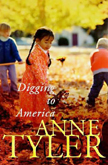
Contributor and museum reviewer, new to Chesapeake Country, Bay Weekly and happy marriage.
Whether you see summer as a time to escape or to explore, it is always a time to read what you want. There is no final exam.
Want suspense? Elizabeth Kostova’s novel, The Historian, tracks Dracula and his vampire minions through monasteries, churches and archives in Europe. All the while the trackers are being tracked.
There is minimal violence and maximum unease. The book is worth the read as a travelogue for its descriptions of Oxford, England; southern France; Istanbul; Romania and Hungary. You will want to go there.
Want adventure? True History of the Kelly Gang: A Novel, by Peter Carey, tells the tale of Ned Kelly, the Australian outlaw, in his own oddly-flavored words.
Australians are fascinated by this bush-ranger folk hero from their colonial past. This book will help you understand why.
Want greed? The Testament, by John Grisham, is a tale of avarice, sacrifice and redemption set in Washington, D.C.; St. Michaels, Maryland; and the real star of the novel, the Pantanal region of Brazil.
The Pantanal is a place of twisting rivers, lush forests and native Indian peoples little changed, yet profoundly affected, by civilization.
Few of the characters are likable, or easily understood, but you will hope goodness wins out. And in the end, with a Grisham twist, it does.
Want love? Digging to America, Anne Tyler’s latest novel, tells the stories of two Korean girls adopted by two American families. One family is as American as cherry pie; the other is originally from Iran and still struggling to come to terms with life in a foreign culture.
Set in Baltimore, as are most of Tyler’s novels, this story of love in its multiple manifestations is told in deft descriptions and dead-on dialogue.
Sometimes when Maryam Yazdan looked at her new little granddaughter she had an eerie, lightheaded feeling, as if she had stepped into some sort of alternate universe. Everything about the child was impossibly perfect. Her skin was a flawless ivory, and her hair was almost too soft to register on Maryam’s fingertips.
Maureen Miller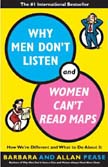
Contributor, formerly of Galesville; now long distance as she spends her winters in Hope Town, Bahamas. This summer will find her toting her books to quiet spots near her new home in the lowlands of Georgia.
For light reading on summer jaunts, I’ll take along P.D. James’s The Lighthouse and A Mind to Murder. To fill those gaps in my scientific knowledge, I’ll include a copy of Bill Bryson’s A Short History of Nearly Everything. In this — pick up, read a paragraph and contemplate book — Bryson guides us through the mysteries of science from cosmology to physics. In a witty manner, he brings these subjects down to earth while introducing various well-known, as well as obscure, key players who have helped discover how our we and our universe happened.
It is a curious fact that on earth species death is, in the most literal sense, a way of life. No one knows how many species of organisms have existed since life began. 30 billion is a commonly cited figure, but the number has been put as high as 4,000 billion. Whatever the actual total, 99.99 percent of all species that have ever lived on the planet are no longer with us.
Doug and Barbara Pease’s book, Why Men Don’t Listen and Women Can’t Read Maps, will also travel with me this summer.
When a man goes to a rest room, he usually goes for one reason and one reason only. Women use rest rooms as social lounges and therapy rooms. Women who go to a rest room as strangers can come out best friends and lifelong buddies. But everyone would be instantly suspicious of the man who called out, “Hey Frank, I’m going to the toilet. You wanna come with me?”
Their research for this book took them on a three year trip around the world. The resulting book made the rounds my community, where it’s rumored to have saved some marriages, created closer relationships and clearly explained why it’s better to have a male snag the mooring line while the woman steers.
Alex Murray
Bay Weekly summer intern and junior at Archbishop Spalding High School; plays soccer and spends June and early July watching the World Cup.
When the clock was finally winding down, the seconds ticking of, with the Philadelphia team unconscionably slow in getting its plays off, Steve Belichick, always in the background whenever there were television cameras around, left his place behind some of the New England players, back around the 50-yard-line. Moving quickly, he headed toward the 35, wanting to share this final glorious moment with his son, Bill, the coach of New England, about to win his third Super Bowl victory in four years.
I’ve just finished a journey in Foxboro, Massachusetts; a journey that took me through the coal mines of western Pennsylvania, the docks of Annapolis and on an extended visit with Bill Parcells, current head coach of the Dallas Cowboys. Through David Halberstam’s The Education of a Coach, I followed the journey of Bill Belichick, or Belitchich, or Belchich — all spellings used in the same article about Steve Belichick in his high school newspaper. Halberstam brilliantly puts into words the burning passion of a man entirely consumed by the game of football; yes, American football for World Cup fans.
From his youth spent watching game film with his father Steve Belichick, longtime assistant coach at the Naval Academy, Bill Belichick was destined to become a coach. He burst into the National Football League as a scout for the Baltimore Colts, making wages well below the earnings of fast food workers of today. He went from city to city, building up his credentials and working up the coaching ladder as a defensive coordinator under Coach Bill Parcells with the Giants, Patriots, and Jets, eventually landing the job as head coach of the New England Patriots.
Many doubted Belichick’s ability to maintain full control of the ship after a less than perfect first go-around as head coach in Cleveland, but Patriots’ owner Bob Kraft was willing to give him a shot. This time, Bill Belichick was able to get the type of players he desired in the system he wanted, and the rest is history. Three Super Bowl rings later, Belichick stands as a testament to the fact that with perseverance and relentless drive, dreams can become reality.
If you’ve spent years watching the game from the stands or on television, this is your chance to finally see behind the scenes and into the world of coaching.
Audrey Scharmen
Writing Bay Reflections since 1993, for which she landed first prizes two years running in the Maryland, Delaware, D.C. Press Association editorial competition.
While spring-cleaning my shelves of books, I vowed to do away with half of them — many of which I have yet to read. Alas — a reckless bibliophile — I can’t bear to part with a single one. Thus I must justify my addiction by doubling up on my summer reading.
So I have finished finally Flaubert’s Emma Bovary; I am dipping into Zola’s The Earth; and seeking, still, Therese Raquin, a used copy, please.
I will read again Collette’s memoir, My Mother’s House. I adore her wonderful tales of the joyous chaos of childhood in a rundown old chateau on the outskirts of Paris.
Through the open top of its shade, the lamp casts its beams upon a wall entirely corrugated by the backs of books, all bound. The opposite wall was yellow, the dirty yellow of the paper-backed volumes, read, reread and in tatters.
The scene is before me as I write, the garden with its sun-warmed walls, the last of the black cherries hanging on the tree, the sky webbed with long pink clouds. I can feel again beneath my fingers the vigorous resentment of the caterpillar, the wet, leathery hydrangea leaves, and my mother’s little, workworn hand.
I will browse once more in the garden of The Rose Grower, a novel of love and loss during the French Revolution. Michelle De Krestor’s exquisite imagery of roses is intertwined with the plot in a style much like that of Collette.
I have never visited Paris, but such writers have brought it to me. Now I want to read them all. So I will summer with M. Proust in Swann’s Way and Combray. There is an abundance of “sentence and solace” in that first volume of Remembrance of Things Past.
So many words; so little time.
Alice Snively
Bay Weekly’s gunkhole columnist; sailor, journalist and grandmother, lives with her husband aboard the 43-foot Columbia Cherokee II.
My reading habits are varied, including history, science, nature, politics and — because I’m a devoted sailor — books about the sea and sailing.
What really went on during the Spanish Inquisition? Under the Inquisition by Linda Tarazi is a riveting work about the life and death of a woman whose experiences in this era weave a vivid tapestry of joy and tragedy. This is not a romance novel. It’s an adventure that will take the reader through lots of action and emotion to a most unusual ending.
The book is based on supposed past-life memories told to the therapist author by one of her clients. But whether or not you believe the evidence presented for this, the book is an exceptionally accurate portrayal of that frightful time.
Ever wanted to run off to a tropical island, start your own business and live the good life? If so, A Trip to the Beach is the book for you. It’s the fascinating, factual adventure story of a couple from Vermont who sells their business and risks all they have to create a successful restaurant on Anguilla.
Their story tells it all, the good, the bad and the worst that can happen. Describing the destruction of their restaurant after its first season by Hurricane Luis, one of their loyal employees broke the news this way: “The restaurant ain’ so good … She blow away. Whole roof come off. All them shutters gone. Just the floor leff … Mel gonna cry long tears when she see it.”
But there is much beauty and fun in this book. Luis is a small part of the larger story of how authors Melinda and Robert Blanchard transformed and were transformed by the island and its people, learning the meaning and value of island time.
Carrie Steele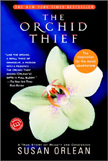
Bay Weekly staff writer and calendar editor; loves living in historic Annapolis; planning a September wedding.
As the new owner of a magenta Phalenopsis orchid, I picked up Susan Orlean’s The Orchid Thief because of the gorgeous white blossom splayed across the dark cover. I hoped to find a good, clean-cut mystery, but instead I found a compelling biography of a hobbyist and his passion.
There is something clever and unplantlike, Orlean writes, about their determination to survive and their knack for useful deception and their genius for seducing human beings for hundreds and hundreds of years.
In a non-fiction whirlwind, we follow her into the swamps of southern Florida. Orchid thief John LaRoche, who’s arrested for stealing orchids off of a Seminole reservation with three Native American accomplices, introduces Orlean — and us — into an obsessive society of orchid collectors.
This story of orchids is also an odd odyssey of beauty and adventure.
This book sucks you in, and you find yourself immersed in reading about plant ecology as if it were a murder mystery. It’s the most reader-friendly and exciting plant history you’ll ever read, with dangerous voyages to tropical lands and the strange tropical culture of southern Florida. But this story delves into more than orchids, exploring the human psyche and explaining strange cravings.
As for my own collection, I think I’ll stick to just one.
Margaret Tearman
Contributing writer; documentary filmmaker, spends her free time with her husband, Tom and their four dogs, restoring their 200-year-old farm in Huntingtown.
I am a news junkie. My career fantasies have always included a neck full of press passes and a well-worn passport. So I devour books by those brave individuals who dared to go where I didn’t.
Shutterbabe by Deborah Copaken-Kogan is a candid, graphically explicit account of a decade spent as a photojournalist and her concurrent love life. As she crossed continents to cover revolutions, wars and social upheavals, Copaken-Kogan was conspicuously feminine in what was once a man’s job. While her photo assignments took her into the heart of danger, her romantic encounters often left her battered and heartbroken. Shutterbabe covers wars between nations and a woman’s war with the opposite sex — and herself.
I know I should be working. Shooting pictures of this. But I feel so guilty about the whole thing, I can’t do it, cannot even fathom doing it. A man gets his leg blown off taking me to pee and then I’m supposed to shove a lens in his face and shoot? No way. Maybe I’m not made for this job.
Norwegian journalist Asne Seierstad has made a career of reporting from war-torn regions. A Hundred and One Days is her account of the 101 days she spent reporting from Baghdad prior to, during and in the immediate aftermath of the American-led military invasion of Iraq. Seierstad doesn’t try to make a political statement but rather to convey the sentiment of the Iraqi people — including guarded relief at the collapse of Hussein’s regime and concern for the future of their ancient country.
Last but not least on my list is Christopher Wren’s Walking to Vermont. When the 65-year-old foreign correspondent decides to retire from his job with the New York Times, he doesn’t just walk away from an esteemed career — he literally walks out of the newsroom and continues to walk, for 400 miles, to his retirement home in central Vermont. His trek leads us out of Manhattan, through foot-challenged suburbs and wealthy residential enclaves, along the Appalachian and Long Trails … right up to his new front porch. Along the way, Wren recollects memorable moments spent covering the news from some the world’s most dangerous places and reflects on the advantages of being an “older man” as he hikes into the next chapter of his life.
People I encountered later on my journey expressed surprise that I had crossed Harlem on foot. “Wasn’t it dangerous?” one asked. “Not unless you jaywalk,” I explained. Walking was more perilous in New York’s posh suburbs where you had to dodge sport utility vehicles jockeyed by expensively coiffed ladies running late for a tennis lesson.
For Young Readers: Sweet, Silly and Stinky
Reading to our daughters as they were growing up was as natural for my husband and me as breathing. We all adored books and good stories, but the bedtime books we read every night, from babyhood to long after the girls learned to read themselves, entered their dreams and continue to live in their hearts.
Here are three they still remember and cherish.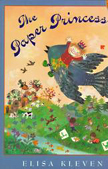
Emma Bean by Jean Van Leeuwen, begins: “Once there was a rabbit and she had a girl. The girl’s name was Molly. The rabbit was Emma Bean.” Gentle exquisite artwork by Juan Wijngaard will delight young children as they snuggle up close to follow Molly and her lovingly made stuffed rabbit through the day-to-day adventures of childhood. Emma Bean tastes all of Molly’s food first and shares in her every moment, even getting shots from the doctor. A heartwarming and enchanting story.
The Paper Princess by Elisa Kleven is a testament to the bond between siblings. We follow the escapades of a paper doll as she ventures out into the world, only to return via a wonderful coincidence to the girl who created her. Intricate collages add to the spectacle and will keep even young children mesmerized.
The High Rise Glorious Skittle Skat Roarious Sky Pie Angel Food Cake by Nancy Willard is a treat as big as its title. Sparkling illustrations add to the wonder of this story as a young girl tries to make a special cake for her mother’s birthday. Exotic angels, droll humor and a dollop of great-grandmother magic combine to transform an ordinary birthday story into an unforgettable one.
–Dotty Dougherty
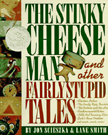
The Stinky Cheese Man ran and ran until he found a cow eating grass in a field. “Wow! What’s that awful smell?” said the cow.
Jon Scieszka and Lane Smith’s award winning The Stinky Cheese Man and other Fairly Stupid Tales is filled with fairy tale spoofs such as The Princess and the Bowling Ball and Little Red Running Shorts as well as hilarious illustrations. A must have for silly children and parents.
Walter felt awful. Betty! Billy! Where are you? He couldn’t move. All he could do was fart.
Walter, a sweet-hearted dog with a terrible gas problem, finds himself in quite the predicament when he’s sold for a mere $5 at a yard sale. His new owner, a diabolical clown, has a plan to use Walter’s gas for evil. Will Walter be lured to the dark side or save the day? Find out in the sure-to-be-classic Walter the Farting Dog: Trouble at the Yard Sale by William Kotzwinkle and Glenn Murray.
– Amy Garris